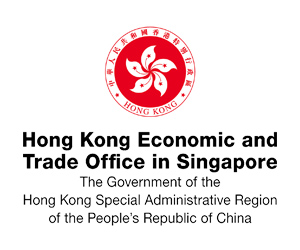Want to be in the loop?
subscribe to
our notification
Business News
MINIMUM WAGE INCREASE INEFFECTIVE IN RAISING LIVING STANDARDS
Increasing the regional minimum wage has raised concerns over a potential trade-off with social allowances that would block the new wages from increasing employees' real income.
Cutting allowances to increase wages
At the final meeting organised on August 7 to discuss regional minimum wages increases in 2018, relevant authorities reached a compromise of 6.5 per cent to submit to the prime minister for approval. If approved, the increase will come into effect on January 1, 2018, however, questions were still raised whether employees will actually benefit from the increased regional minimum wage.
According to Deputy Minister of Labour, Invalids and Social Affairs cum chairman of the National Salary Council Doan Mau Diep, enterprises will have to cut existing allowances to compensate for the increased wage expenditure.
The reason for enterprises’ opposition to increasing the regional minimum wage is that they will also have to bear the increasing expenses of social and health insurance.
“Increasing the minimum wages will raise social and health insurance spending. Both enterprises and employees will have to bear this rising burden, and as a result, employees’ wages will increase but their incomes might very well decrease,” said Nguyen Xuan Duong, chairman of the board of directors of Hung Yen Garment Corporation (Hugaco).
Duong added that Hugaco currently has 15,000 employees and if the authorities’ proposal is approved, its social and health insurance expenditure will increase by VND18 billion ($791,820) per year. Only nine of Hugaco’s 14 subsidiaries are operating with profit, thus, a steep rise in expenditures will put Hugaco in a difficult position.
The representative of another enterprise said that they currently spend 60 per cent of the company revenue paying salaries. If both the regional minimum wage and insurance fees increase, the enterprise will have to decrease existing allowances.
Will increased wages improve living standards?
Dang Quoc Huynh, an employee of Hankyong JSC, stated that he currently earns VND3.5 million ($153.97) in official salary, with a monthly allowance of VND700,000 ($30.79) and an overtime salary of VND2 million ($87.98).
Thus, the increase of 6.5 per cent, or VND230,000 ($10.12), is quite small. Even if there was no change in his income in case that the board of directors of Hankyong would decide to cut or decrease existing allowances.
The proposal to increase the regional minimum wage is tabled every year. Increases in the past three years were 15.1 per cent in 2015, 12.4 per cent in 2016, and 7.3 per cent in 2017.
However, according to a survey of the income and living standards of employees in enterprises in 2017 conducted by the Institute for Workers and Trade Unions under the Vietnam General Confederation of Labour, the percentage of employees who want to work overtime is quite high. Notably, the percentages in foreign invested enterprises, garment-leather, electricity-electronic, and manufacturing-processing were 46.9 per cent, 40.5 per cent, 48.5 per cent, and 47 per cent, respectively.
The reason for employees’ demand to work overtime is that they want to earn enough money for basic expenditures, including rent, food, tuition for their children, and healthcare.
Thus, the institute concluded that increasing the regional minimum wage will not be enough to help employees meet their minimum living requirements.
Nguyen Dinh Cung, director of the Central Institute for Economic Management, stated that instead of organising annual meetings to discuss regional minimum wages, local authorities should carry out a comprehensive reform in the labour market so that both enterprises and employees can benefit.
Source: VIR
Related News

GOLDEN DEAL, KNOCK-DOWN OFFER
Are you ready for a fun-filled family vacation. Don't miss the super attractive Family Staycation package at Becamex Hotel. 2 days 1 night package with full amenities and free activities: Buffet breakfast, Swimming, tennis, bicycle, gym, sauna, cool ice cream, 300.000 VND service voucher and many other offers! Contact now for detailed advice.

"BEARY CHRISTMAS" CHARITY PROGRAM
As the Festive Season approaches, Caravelle Saigon, in collaboration with VinaCapital Foundation (VCF), is bringing a heartwarming charitable initiative to life — and we are delighted to invite all HKBAV members to take part in the very first “Beary Christmas” Charity Program. By adopting a Caravelle Bear for VND 299,000 nett, you will be directly supporting children battling cancer in Vietnam through VCF’s Can-Care/Can-Clover Program.

SOILBUILD INTERNATIONAL WINS “BEST INDUSTRIAL DEVELOPMENT” AWARD FOR SPECTRUM NGHE AN AT THE PROPERTYGURU VIETNAM PROPERTY AWARDS 2025
Soilbuild International is pleased to announce that its project, Spectrum Nghe An, has been awarded Best Industrial Development at the PropertyGuru Vietnam Property Awards 2025, held on 24th of October 2025, in Ho Chi Minh City. The PropertyGuru Vietnam Property Awards is part of the prestigious PropertyGuru Asia Property Awards series, the largest and most respected real estate awards programme in Asia.

WEBINAR: 2025 VIETNAM KEY TAX FINALISATION, UPDATES ON TAX CHANGES AND GLOBAL MINIMUM TAX
Dear Valued Client,We would like to invite you to our webinars on Friday, 12 December 2025, and Tuesday, 16 December 2025, to review and learn about key 2025 tax finalisation topics and stay ahead with the latest tax changes.

NEW ECONOMIC POLICIES EFFECTIVE THIS DECEMBER
Government Decree 304/2025, effective December 1, sets stricter conditions for seizing collateral, especially assets that are a borrower’s sole residence or essential work tools. In such cases, lenders must set aside a compensation amount equivalent to six to twelve months of minimum wage. The measure aims to improve transparency in bad debt handling and reduce credit risk in the banking system.

QUANG NINH TARGETS VND58 TRILLION IN TOURISM REVENUE
Quang Ninh Province is aiming to generate VND58 trillion in tourism revenue this year after surpassing its goal of 21 million visitors, driven by new tourism products, expanded nighttime activities, and large-scale events. As of mid-November 2025, Quang Ninh had welcomed 21.28 million visitors, up 12% year-on-year. Tourism revenue reached at least VND57 trillion, a 22.46% increase from the same period last year. With its visitor target achieved, the province is now pushing toward its revenue goal of VND58 trillion.
























